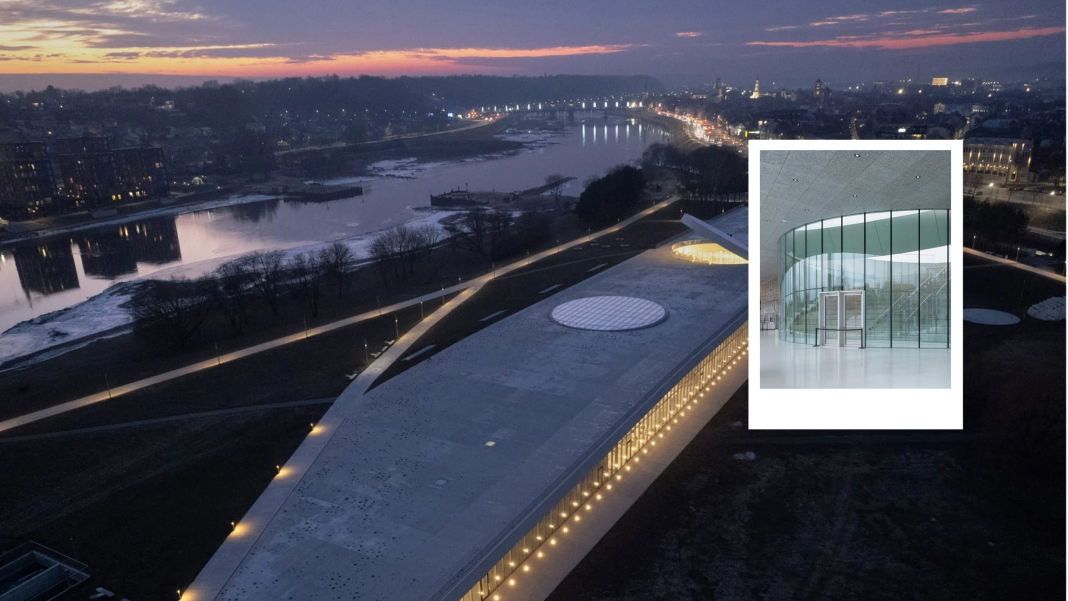Rising gracefully beside the Nemunas River in Kaunas, Lithuania’s second-largest city, the new Science Island Museum redefines the skyline with a striking architectural gesture — a glowing aluminium disc that crowns its roof like a radiant new sun. Designed by Australian practice Smar Architecture Studio in collaboration with local firm Architektų biuras G Natkevičius ir partneria, the museum not only showcases scientific discovery inside but also offers a sculptural landmark that engages with the surrounding park and cityscape. This innovative building blurs the boundary between architecture and nature, inviting visitors to experience science both literally and metaphorically under the glow of its sun-inspired feature.

A beacon for science and community
The Science Island Museum spans 15,000 square meters on a sloping site by the river, providing panoramic views of Kaunas’ historic center. Seven years after winning an international design competition, Smar Architecture Studio realized a vision that celebrates science through both form and function. The museum houses a permanent exhibition with 140 items, a temporary gallery, a planetarium, educational spaces, and a café, creating a dynamic cultural hub.
The building’s design uniquely integrates with the landscape — its sloping roof descends to meet the ground, doubling as a public stage, skatepark, and seating area. Circular access points punctuate the roof, with one massive disc entrance measuring 25 meters in diameter. At night, this disc illuminates to become a beacon of knowledge and curiosity, visible across the cityscape.

Engineering lightness in aluminium
One of the most remarkable features of the museum is this aluminium disc, weighing an impressive 250 tonnes but supported only at two points — a feat of engineering accomplished with the help of local firm UAB 1 Planas. Clad in panels of recycled aluminium, the disc has been treated to reflect its surroundings subtly, creating what co-founder Fernando Jerez calls a “phenomenological experience.”
Rather than acting as a mirror, the panels feature a blur effect that captures the light and the old town’s skyline like an impressionist painting. This design choice adds a poetic dimension to the structure, connecting architecture with the environment through shifting reflections and diffused imagery. It becomes not only a symbol of the sun but a dynamic, living element within the urban fabric.

Blending science, nature, and architecture
Inside the museum, back-of-house areas such as laboratories and offices are designed with abundant natural light and views toward the surrounding park, emphasizing the connection between science and its context. Founded in 2011 by Jerez and Belen Perez de Juan, Smar Architecture Studio specializes in museum design that merges artistic vision with technical innovation.
The competition to design the Science Island Museum was Lithuania’s most popular ever, attracting 144 entries from 44 countries. The resulting project stands as a testament to creative collaboration and ambitious design. It echoes a global trend seen in recent museum architecture, where distinctive roofs—like the staircases piercing Rotterdam’s Fenix building or Kengo Kuma’s tiled clay museum in China—turn museums into sculptural landmarks.
This new science museum not only brings a striking architectural identity to Kaunas but also creates a meaningful space for discovery and community engagement. Its shining aluminium sun serves as a metaphor for the endless quest for knowledge, a beacon lighting the way for future generations.



